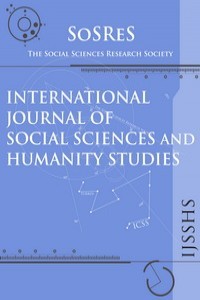SARTRE’S CONCEPTION OF ART GROUNDED ON HUMANIST EXISTENTIALISM AND PHENOMENOLOGICAL ONTOLOGY
SARTRE’S CONCEPTION OF ART GROUNDED ON HUMANIST EXISTENTIALISM AND PHENOMENOLOGICAL ONTOLOGY
Jean-Paul Sartre, existentialism, phenomenological ontology, philosophy of art, imaginary, work of art plays, novels,
___
- Fredric, Jameson (1991) Postmodernism or the Cultural Logic of Late Capitalism, Durham: Duke University Press.
- Heidegger, Martin (1985) Being and Time, tr. by John Macquarrie & Edward Robinson, Oxford: Basil Blackwell.
- Heidegger, Martin (2002) Identity and Difference, tr. and with int. By Joan Stambaugh, New York: Harper&Row.
- Kierkegaard, Soren (1983) Fear and Trembling & Repetition, ed. and tr. by Howard V. Hong and Edna H. Hong with introduction and Notes, Princeton: University Press. Kierkegaard, Sİren (1987) Either/Or, Part II, ed. and tr. by Howard V. Hong and Edna H. Hong with Int. and Notes, Princeton: Princeton University Press.
- Nietzsche, Friedrich (2007) The Gay Science, edited by Bernard Williams, tr. by Josefine Nauckhoff, Cambridge: Cambridge University Press.
- Pascal, Blaise (1941) Pensées & The Provincial Letters, tr. by W.F. Trotter and Thomas M’Crie, New York: The Modern Library.
- Peter, Mc. and Elliston, A. (ed. 1981) Husserl’s Shorter Works, revised translation by Richard E. Palmer Cormick, Notre Dame: University of Notre Dame Press.
- Sartre, Jean-Paul (1947) The Age of Reason, tr. by Eric Sutton, New York: Knopf. Sartre, Jean-Paul (1956) Being and Nothingness, tr. by Hazel E. Barnes, New York: Routledge. Sartre, Jean-Paul (1965) Two Plays: The Respectable Prostitute & Lucifer and The Lord, tr. by Kitty Black with an introduction by Geoffrey Brereton, Middlesex: Penguin.
- Sartre, Jean-Paul (1966) Existentialism and Humanism, translation and introduction by Philip Mairet, London: Methuen & Co. LTD.
- Sartre, Jean-Paul (2001) What is Literature?, tr. by Bernard Frechman, with an introduction by David Caute, London and New York: Routledge.
- Sartre, Jean-Paul (2010) The Imaginary, A Phenomenological Psychology of the Imagination, with introduction by Arlette Eelkaim-Sartre and Jonathan Webber, London: Routledge.
- Başlangıç: 2009
- Yayıncı: Sosyal Bilimler Araştırmaları Derneği
COMMUNICATION AS A FORM OF PLURALISM
EXPLORING THE UNDERREPRESENTATION OF PRAGMATIC COMPETNECE IN THE L2 CLASSROOMS IN IRAN
Azizullah Mirzaei, Masoumeh Seyyed Rezaei
Gira Bhatt, Roger Tweed, Steve Dooley, Jodi VİLJOEN, Kevin DOUGLAS, Nathalie GAGNON, Kashmir BESLA
THE CAUSES AND THE ECONOMIC IMPACT OF IMMIGRATION: EMPIRICAL EVIDENCE FOR LITHUANIA
Gindra Kasnauskiene, Juratė Seskaite
YOUNGSTERS AND SOCIAL POLICIES OF SUPPORT DURING CRISIS
Gheorghiţa Nistor, Mirela Anghel
SUBJECTIVE LIFE SATISFACTION AMONG URBAN MALAY CIVIL SERVANTS IN MALAYSIA: A QUALITATIVE STUDY
Nor Hafizah Mohamed HARİTH, Hazizan Md. NOON
SOCIO-ECONOMIC DETERMINANTS OF POVERTY AMONGST FEMALE-HEADED HOUSEHOLDS IN A SOUTH AFRICAN TOWNSHIP
